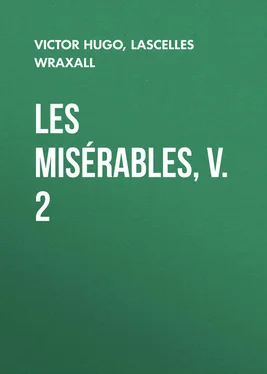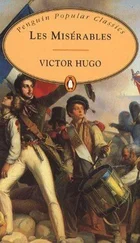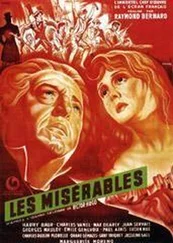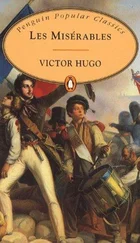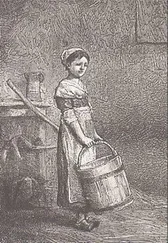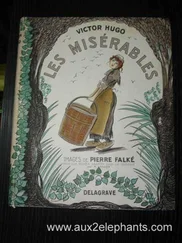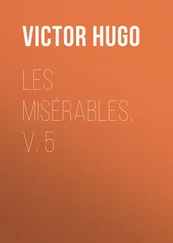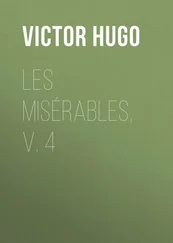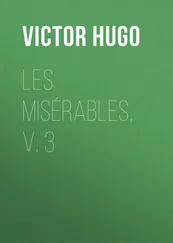Lascelles Wraxall - Les Misérables, v. 2
Здесь есть возможность читать онлайн «Lascelles Wraxall - Les Misérables, v. 2» — ознакомительный отрывок электронной книги совершенно бесплатно, а после прочтения отрывка купить полную версию. В некоторых случаях можно слушать аудио, скачать через торрент в формате fb2 и присутствует краткое содержание. Жанр: literature_19, foreign_antique, foreign_prose, на английском языке. Описание произведения, (предисловие) а так же отзывы посетителей доступны на портале библиотеки ЛибКат.
- Название:Les Misérables, v. 2
- Автор:
- Жанр:
- Год:неизвестен
- ISBN:нет данных
- Рейтинг книги:5 / 5. Голосов: 1
-
Избранное:Добавить в избранное
- Отзывы:
-
Ваша оценка:
- 100
- 1
- 2
- 3
- 4
- 5
Les Misérables, v. 2: краткое содержание, описание и аннотация
Предлагаем к чтению аннотацию, описание, краткое содержание или предисловие (зависит от того, что написал сам автор книги «Les Misérables, v. 2»). Если вы не нашли необходимую информацию о книге — напишите в комментариях, мы постараемся отыскать её.
Les Misérables, v. 2 — читать онлайн ознакомительный отрывок
Ниже представлен текст книги, разбитый по страницам. Система сохранения места последней прочитанной страницы, позволяет с удобством читать онлайн бесплатно книгу «Les Misérables, v. 2», без необходимости каждый раз заново искать на чём Вы остановились. Поставьте закладку, и сможете в любой момент перейти на страницу, на которой закончили чтение.
Интервал:
Закладка:
Victor Hugo
Les Misérables, v. 2/5: Cosette
BOOK I
WATERLOO
CHAPTER I
ON THE NIVELLES ROAD
On a fine May morning last year (1861) a wayfarer, the person who is telling this story, was coming from Nivelles, and was proceeding toward La Hulpe. He was on foot and following, between two rows of trees, a wide paved road which undulates over a constant succession of hills, that raise the road and let it fall again, and form, as it were, enormous waves. He had passed Lillois and Bois-Seigneur Isaac, and noticed in the west the slate-covered steeple of Braine l'Alleud, which looks like an overturned vase. He had just left behind him a wood upon a hill, and at the angle of a cross-road, by the side of a sort of worm-eaten gallows which bore the inscription, "Old barrier, No. 4," a wine-shop, having on its front the following notice: "The Four Winds, Échabeau, private coffee-house."
About half a mile beyond this pot-house, he reached a small valley, in which there is a stream that runs through an arch formed in the causeway. The clump of trees, wide-spread but very green, which fills the valley on one side of the road, is scattered on the other over the fields, and runs gracefully and capriciously toward Braine l'Alleud. On the right, and skirting the road, were an inn, a four-wheeled cart in front of the door, a large bundle of hop-poles, a plough, a pile of dry shrubs near a quick-set hedge, lime smoking in a square hole, and a ladder lying along an old shed with straw partitions. A girl was hoeing in a field, where a large yellow bill – probably of a show at some Kermesse – was flying in the wind. At the corner of the inn, a badly-paved path ran into the bushes by the side of a pond, on which a flotilla of ducks was navigating. The wayfarer turned into this path.
After proceeding about one hundred yards, along a wall of the 15th century, surmounted by a coping of crossed bricks, he found himself in front of a large arched stone gate, with a rectangular moulding, in the stern style of Louis XIV., supported by two flat medallions. A severe façade was over this gate; a wall perpendicular to the façade almost joined the gate and flanked it at a right angle. On the grass-plat in front of the gate lay three harrows, through which the May flowers were growing pell-mell. The gate was closed by means of two decrepit folding-doors, ornamented by an old rusty hammer.
The sun was delightful, and the branches made that gentle May rustling, which seems to come from nests even more than from the wind. A little bird, probably in love, was singing with all its might. The wayfarer stooped and looked at a rather large circular excavation in the stone to the right of the gate, which resembled a sphere. At this moment the gates opened and a peasant woman came out. She saw the wayfarer and noticed what he was looking at.
"It was a French cannon-ball that made it," she said, and then added: "What you see higher up there, on the gate near a nail, is the hole of a heavy shell, which did not penetrate the wood."
"What is the name of this place?" the wayfarer asked.
"Hougomont," said the woman.
The wayfarer drew himself up, he walked a few steps, and then looked over the hedge. He could see on the horizon through the trees a species of mound, and on this mound something which, at a distance, resembled a lion. He was on the battlefield of Waterloo.
CHAPTER II
HOUGOMONT
Hougomont was a mournful spot, the beginning of the obstacle, the first resistance which that great woodman of Europe, called Napoleon, encountered at Waterloo; the first knot under the axe-blade. It was a château, and is now but a farm. For the antiquarian Hougomont is Hugo-mons: it was built by Hugo, Sire de Sommeril, the same who endowed the sixth chapelry of the Abbey of Villers. The wayfarer pushed open the door, elbowed an old carriage under a porch, and entered the yard. The first thing that struck him in this enclosure was a gate of the 16th century, which now resembles an arcade, as all has fallen around it. A monumental aspect frequently springs up from ruins. Near the arcade there is another gateway in the wall, with key-stones in the style of Henri IV., through which can be seen the trees of an orchard. By the side of this gateway a dung-hill, mattocks, and shovels, a few carts, an old well with its stone slab and iron windlass, a frisking colt, a turkey displaying its tail, a chapel surmounted by a little belfry, and a blossoming pear-tree growing in espalier along the chapel wall, – such is this yard, the conquest of which was a dream of Napoleon's. This nook of earth, had he been able to take it, would probably have given him the world. Chickens are scattering the dust there with their beaks, and you hear a growl, – it is a large dog, which shows its teeth and fills the place of the English. The English did wonders here; Cooke's four companies of Guards resisted at this spot for seven hours the obstinate attack of an army.
Hougomont, seen on a map, buildings and enclosures included, presents an irregular quadrangle, of which one angle has been broken off. In this angle is the southern gate within point-blank range of this wall. Hougomont has two gates, – the southern one which belongs to the château, and the northern which belongs to the farm. Napoleon sent against Hougomont his brother Jérôme; Guilleminot's, Foy's, and Bachelie's divisions were hurled at it; nearly the whole of Reille's corps was employed there and failed; and Kellermann's cannon-balls rebounded from this heroic wall. Bauduin's brigade was not strong enough to force Hougomont on the north, and Soye's brigade could only attack it on the south without carrying it.
The farm-buildings border the court-yard on the south, and a piece of the northern gate, broken by the French, hangs from the wall. It consists of four planks nailed on two cross-beams, and the scars of the attack may still be distinguished upon it. The northern gate, which was broken down by the French, and in which a piece has been let in to replace the panel hanging to the wall, stands, half open, at the extremity of the yard; it is cut square in a wall which is stone at the bottom, brick at the top, and which closes the yard on the north side. It is a simple gate, such as may be seen in all farm-yards, with two large folding-doors made of rustic planks; beyond it are fields. The dispute for this entrance was furious; for a long time all sorts of marks of bloody hands could be seen on the side-post of the gate, and it was here that Bauduin fell. The storm of the fight still lurks in the court-yard: horror is visible there; the incidents of the fearful struggle are petrified in it; people are living and dying in it, – it was only yesterday. The walls are in the pangs of death, the stones fall, the breaches cry out, the holes are wounds, the bent and quivering trees seem making an effort to fly.
This yard was more built upon in 1815 than it is now; buildings which have since been removed, formed in it redans and angles. The English barricaded themselves in it; the French penetrated, but could not hold their ground there. By the side of the chapel stands a wing of the château, the sole relic left of the Manor of Hougomont, in ruins; we might almost say gutted. The château was employed as a keep, the chapel served as a block-house. Men exterminated each other there. The French, fired upon from all sides, from behind walls, from granaries, from cellars, from every window, from every air-hole, from every crack in the stone, brought up fascines, and set fire to the walls and men; the musketry fire was replied to by arson.
In the ruined wing you can look through windows defended by iron bars, into the dismantled rooms of a brick building; the English Guards were ambuscaded in these rooms, and the spiral staircase, hollowed out from ground-floor to roof, appears like the interior of a broken shell. The staircase has two landings; the English, besieged on this landing and massed on the upper stairs, broke away the lowest. They are large slabs of blue stone which form a pile among the nettles. A dozen steps still hold to the wall; on the first the image of a trident is carved, and these inaccessible steps are solidly set in their bed. All the rest resemble a toothless jaw. There are two trees here, one of them dead, and the other, which was wounded at the root, grows green again in April. Since 1815 it has taken to growing through the staircase.
Читать дальшеИнтервал:
Закладка:
Похожие книги на «Les Misérables, v. 2»
Представляем Вашему вниманию похожие книги на «Les Misérables, v. 2» списком для выбора. Мы отобрали схожую по названию и смыслу литературу в надежде предоставить читателям больше вариантов отыскать новые, интересные, ещё непрочитанные произведения.
Обсуждение, отзывы о книге «Les Misérables, v. 2» и просто собственные мнения читателей. Оставьте ваши комментарии, напишите, что Вы думаете о произведении, его смысле или главных героях. Укажите что конкретно понравилось, а что нет, и почему Вы так считаете.
